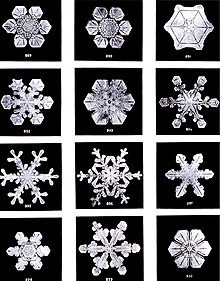When I last posted about Simple Web Semantics, my suggested syntax was:
Simple Web Semantics (SWS) – Syntax Refinement
While you can use any one of multiple dictionaries for the URI in an <a> element, that requires manual editing of the source HTML.
Here is an improvement on that idea:
The content of the content attribute on a meta element with a name attribute with the value “dictionary” is one or more “URLs” (in the HTML 5 sense), if more than one, the “URLs” are separated by whitespace.
The content of the dictionary attribute on an a element is one or more “URLs” (in the HTML 5 sense), if more than one, the “URLs” are separated by whitespace.
Thinking that enables authors of content to give users choices as to which dictionaries to use with particular “URLs.”
For example, a popular account of a science experiment could use the term, H2O and have a dictionary entry pointing to: http://upload.wikimedia.org/wikipedia/commons/thumb/c/c2/SnowflakesWilsonBentley.jpg/220px-SnowflakesWilsonBentley.jpg, which produces this image:

Which would be a great illustration for a primary school class about a form of H2O.
On the other hand, another dictionary entry for the same URL might point to: http://upload.wikimedia.org/wikipedia/commons/thumb/0/03/Liquid-water-and-ice.png/220px-Liquid-water-and-ice.png, which produces this image:

Which would be more appropriate for a secondary school class.
Writing this for an inline <a> element, I would write:
<a href="http://en.wikipedia.org/wiki/Water" dictionary="http://upload.wikimedia.org/wikipedia/commons/
thumb/c/c2/SnowflakesWilsonBentley.jpg/220px-SnowflakesWilsonBentley.jpg http://upload.wikimedia.org/wikipedia/commons/
thumb/0/03/Liquid-water-and-ice.png/220px-Liquid-water-and-ice.png">H2O</a>
The use of a “URL” and images all from Wikipedia is just convenience for this example. Dictionary entries are not tied to the “URL” in the href attribute.
That presumes some ability on the part of the dictionary server to respond with meaningful information to display to a user who must choose between two dictionaries.
Enabling users to have multiple sources of additional information at their command versus the simplicity of a single dictionary, seems like a good choice.
Nothing prohibits a script writer from enabling users to insert their own dictionary preferences either for the document as a whole or for individual <a> elements.
If you missed my series on Simple Web Semantics, see: Simple Web Semantics — Index Post.
Apologies for quoting “URL/s” throughout the post but after reading:
Note: The term “URL” in this specification is used in a manner distinct from the precise technical meaning it is given in RFC 3986. Readers familiar with that RFC will find it easier to read this specification if they pretend the term “URL” as used herein is really called something else altogether. This is a willful violation of RFC 3986. [RFC3986]
in the latest HTML5 draft, it seemed like the right thing to do.
Would it have been too much trouble to invent “something else altogether” for this new meaning of “URL?”